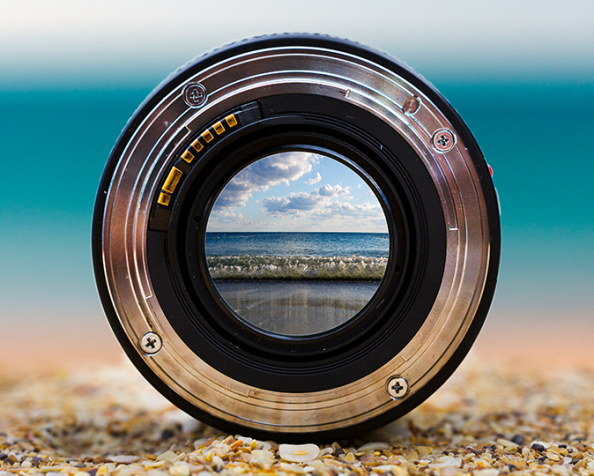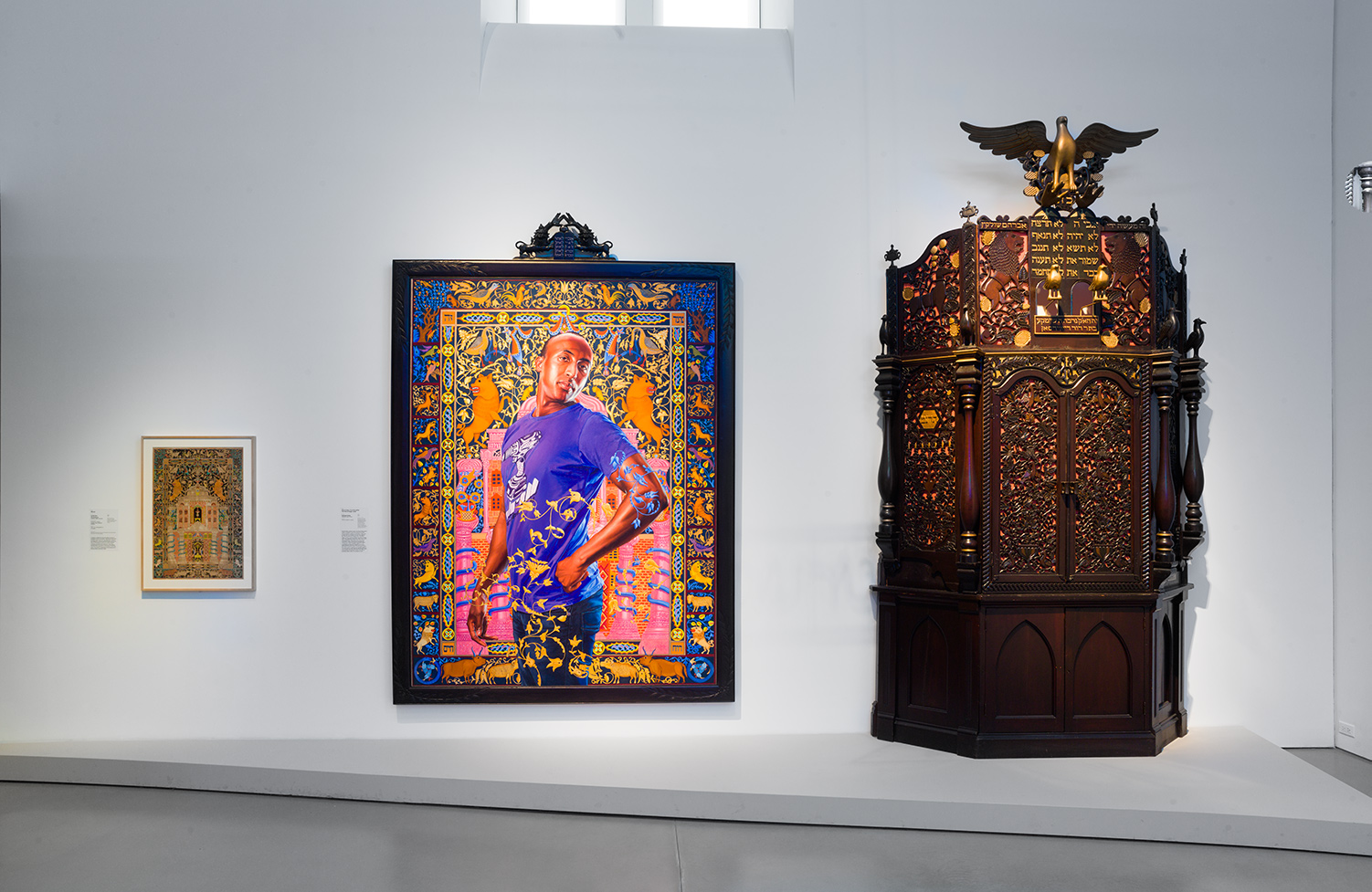Downstairs, at the museum’s outlet of Russ & Daughters café, customers devouring the herring, knishes, and blintzes are assured that everything on the — also venerable — menu is under kosher supervision.
Wecker, a relatively young man, is in possession of a Jewish education that is probably atypical of most of the museum’s visitors. By contrast, the art historian who has served as the director of several museums, as Assistant Secretary for museums at the Smithsonian Institutions, and as director of the museum program at the National Endowment for the Arts, Tom L. Freudenheim is a senior citizen who according to his response at the exhibition, risks sounding like the character of the Grumpy Old Man played by Dana Carvey on the old Saturday Night Live — the kind who carries on about how much better things were in the past, and that’s the way we liked it.
There is some history here. When the Jewish Museum first moved toward displaying contemporary art lacking any palpable connection to Jews or Judaism, it was partly following in the footsteps of Karl Schwarz, the director of Berlin’s Jewish Museum: an institution that opened in 1933 around the same time that Hitler seized power and closed five years later after Kristallnacht. Schwarz’s idea, then quite original, was that, along with showcasing the “material culture” of the Jewish past — ritual objects, books, and other artifacts — a Jewish museum might legitimately start to pay attention to the work of living Jewish artists.
Two decades later in New York, with its transformational 1957 exhibition Artists of the New York School: Second Generation, the Jewish Museum both adopted Schwarz’s idea and went beyond it to include work by contemporary non-Jews and, as often as not, on non-Jewish themes. It thereby established a model that in one form or another continues to this day and that, to be fair, has resulted in a number of remarkable and occasionally even ground-breaking shows.
In doing so, the museum hardly escaped controversy or, especially, conflict with the Jewish Theological Seminary (JTS), its founding institution and proprietor. In 1947, as Wecker notes, with the opening of the museum in its then-new home on Fifth Avenue, JTS’s chancellor Louis Finkelstein defined its mission as the preservation and celebration of
“the singular beauty of Jewish life, as ordained in the laws of Moses, developed in the Talmud, and embellished in tradition.”
By the 1960s, it had become known instead, and with reason, mainly as an influential venue for the artistic avant-garde.
That transformation needed to be rationalized, and an argument for it was quickly developed. The new argument went like this:
Jews were a cosmopolitan people, interested by definition in a wide range of ideas and areas of cultural creativity both within and outside of the Jewish world.
Often adduced in this context was the example of Commentary magazine, founded in 1945 by the American Jewish Committee as a high-level forum of discussion of both Jewish and non-Jewish issues by writers and thinkers — what we now call “public intellectuals” — many but not all of whom were themselves Jews. Especially after Norman Podhoretz was appointed editor of Commentary in 1960, the magazine’s existence and success were invoked to justify JTS’s support for influential exhibitions at the Jewish Museum less and less related to the vision articulated in 1947 by Louis Finkelstein.
Such exhibitions flourished in the mid-1960s under the brief directorships of Alan Solomon and Sam Hunter, years that happened to coincide with my own tenure at the museum as a young curator, aspiring art historian, and ex-rabbinical student. Partly owing to the last-named credential, no doubt, I ended up being responsible for the “Jewish” parts of the museum, and soon became well-acquainted with its by-then considerable collections of Judaica of all kinds — collections that were then, and remain today, second only to the holdings of the Israel Museum in Jerusalem.
And this brings me back to Scenes from the Collection, so skillfully picked apart by Wecker. I concur with most of his criticisms of the exhibition’s substance. With regard to its presentation of, in particular, material related directly to Jewish religious traditions or values, he is certainly correct to point to the organizers’ shoddy scholarship and connoisseurship. I would only underline his point by stressing that museums thrive or wither not only on the visions of their directors but on the ideas, interests, ambitions, dreams, and scholarship of their curators. (Susan Braunstein, the museum’s longtime Judaica curator, retired some months ago and, although remaining on staff part-time in an emerita position, has yet to be replaced.)
As a counterexample to the latest “core” exhibition, Wecker writes with some enthusiasm about its 1990s predecessor, Culture and Continuity: The Jewish Journey, which indeed went far toward restoring the focus on the “Jewish” in Jewish Museum. I was never a great fan of that show for one simple reason: at its outset, visitors were invited to ask how Jews had survived for so many centuries and millennia, and were promised that the exhibition would answer that question. In fact, it’s sheer museological vanity to suggest that Jewish survival can be understood via Judaism’s material culture alone.
This stipulation aside, however, the conceptual premise of Culture and Continuity was solidly based: the Jewish Museum does indeed house any number of important works of Judaica — its field of specialty — that cannot be seen anywhere else. Indeed, the same principle underlies permanent exhibitions in most museums. Which is not to say that collections don’t also get temporarily rearranged to suit a curator’s creative idea, or some practical exigency. (For example, parts of the 17th-century Dutch collections in New York’s Metropolitan Museum of Art are currently on view in a two-year special exhibition because of skylight renovations in the main galleries.) But that is secondary, not primary. Permanent exhibitions are all about the core: how, in the end, a museum identifies and presents itself.
Where does the Jewish Museum fit here? For me, the real scandal today is that a collection of such size, quality, and historical importance has been reduced from the museum’s main attraction to a resource only for special exhibitions like the airily named Scenes from the Collection. Evidently, in the museum’s current thinking, the core works in its collection are to be seen only in the context of thematic and temporary special exhibitions like this one, surrounded by works of tangential, or arbitrary, or opaque relevance. This rethinking, to put it bluntly, can only reflect a disdain for the museum’s core assets on the part of the institution’s leadership (both the staff and the trustees).
Among those core assets are not only the thousands of items in the collection but the self-understanding of Judaism itself. In his essay, Wecker raises serious questions about the attitude toward Judaism held by the museum’s leaders and stewards. Here, too, a larger cultural phenomenon may be seen at work: namely, a pervasive discomfort, or embarrassment, manifested by many art museums these days, when it comes to Western religion. For obvious reasons, Christianity is the prime example. To take the Met once again, but hardly the Met alone, the reigning but incorrect assumption appears to be that everyone knows the meaning of Christian devotional art, that everyone can readily identify saints by their visual attributes, and that everyone can “read” the allusions and symbols in paintings of the Madonna or the Crucifixion.
Of course that is not the case: many if not most Christians are as ignorant of their religious traditions as are most Jews. Why, then, the silence? After all, explication is available for “exotic” religions (Hinduism, Buddhism, Islam, and so forth). Only with Christianity and, at the Jewish Museum, with Judaism is a fastidious distance observed — a distance indistinguishable from indifference or, again, discomfort, embarrassment, and disrespect. In each case, the result is an abdication of the opportunity and the responsibility to educate the public about some of the greatest and most important works of Western art.
Tom L. Freudenheim ends with saying





 Young people were increasingly reaching for their
Young people were increasingly reaching for their 



 James was a free thinker who held loosely to what he thought was true and assumed that whatever seemed true now would yield to much bigger and more encompassing truths soon. Rather than defend what we know and expand on it slowly, he wanted to inquire directly into what we don’t already know by focusing on the anomalies and oddities that don’t fit into our current understanding.
James was a free thinker who held loosely to what he thought was true and assumed that whatever seemed true now would yield to much bigger and more encompassing truths soon. Rather than defend what we know and expand on it slowly, he wanted to inquire directly into what we don’t already know by focusing on the anomalies and oddities that don’t fit into our current understanding.